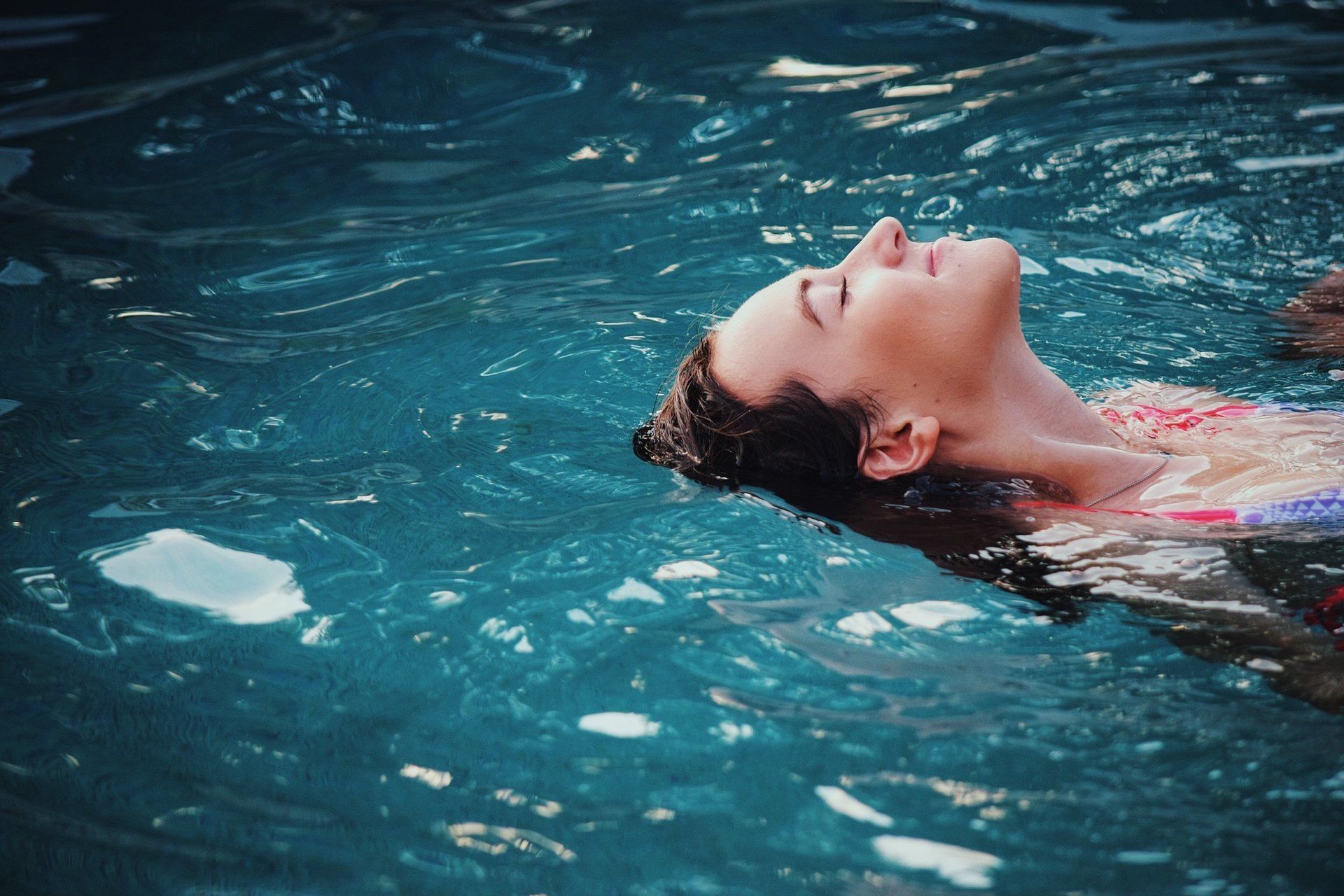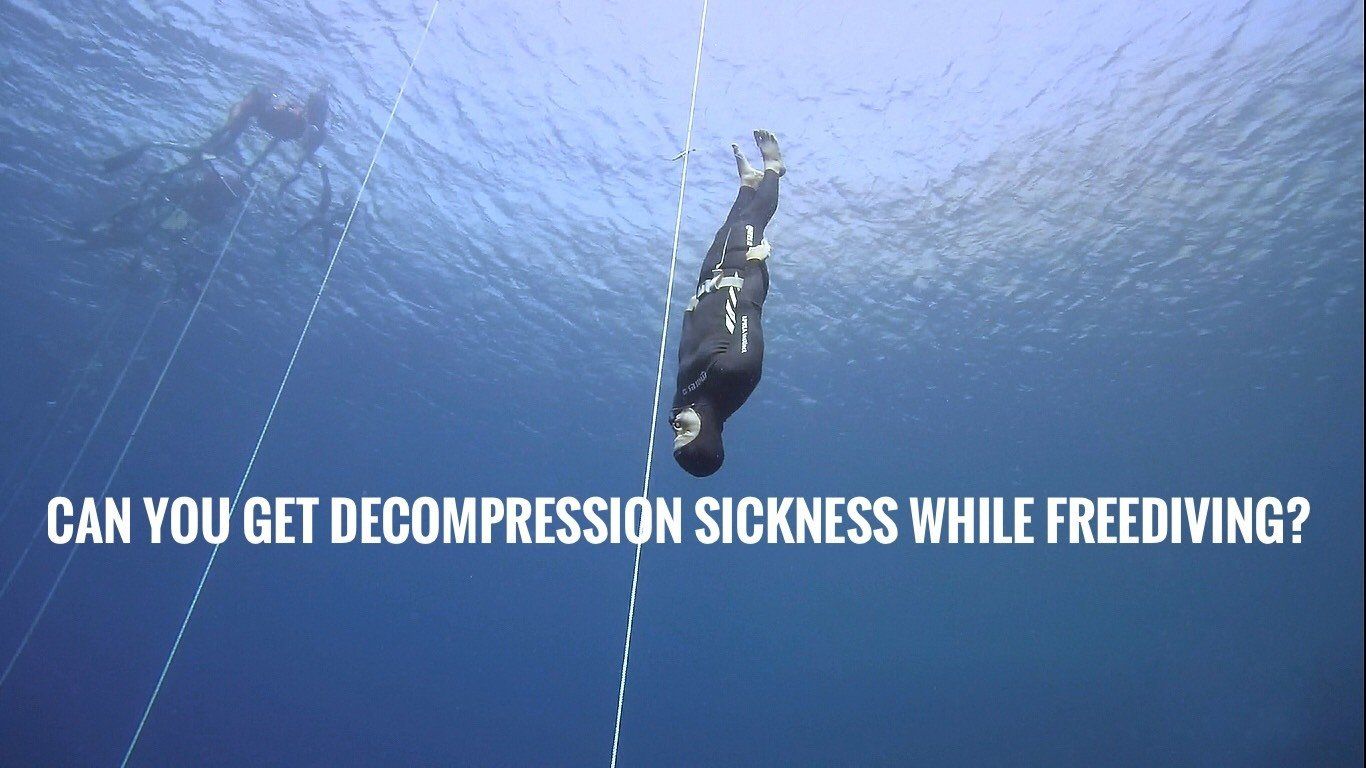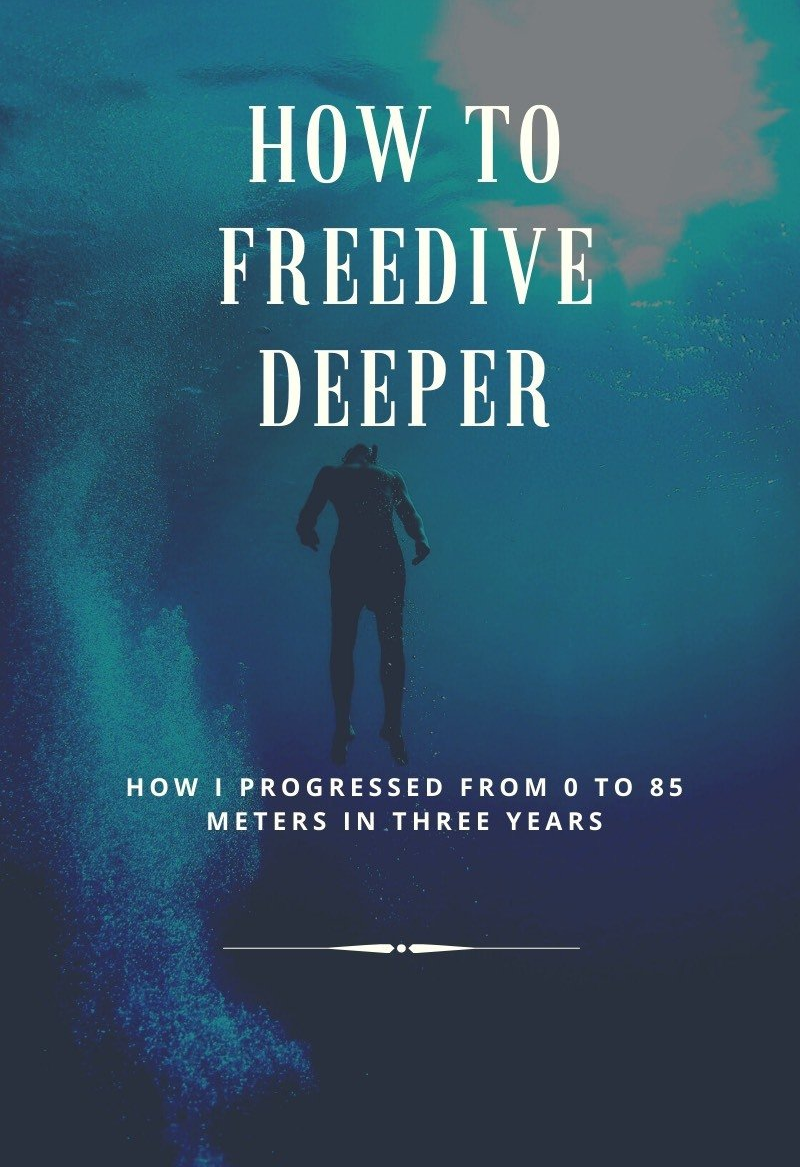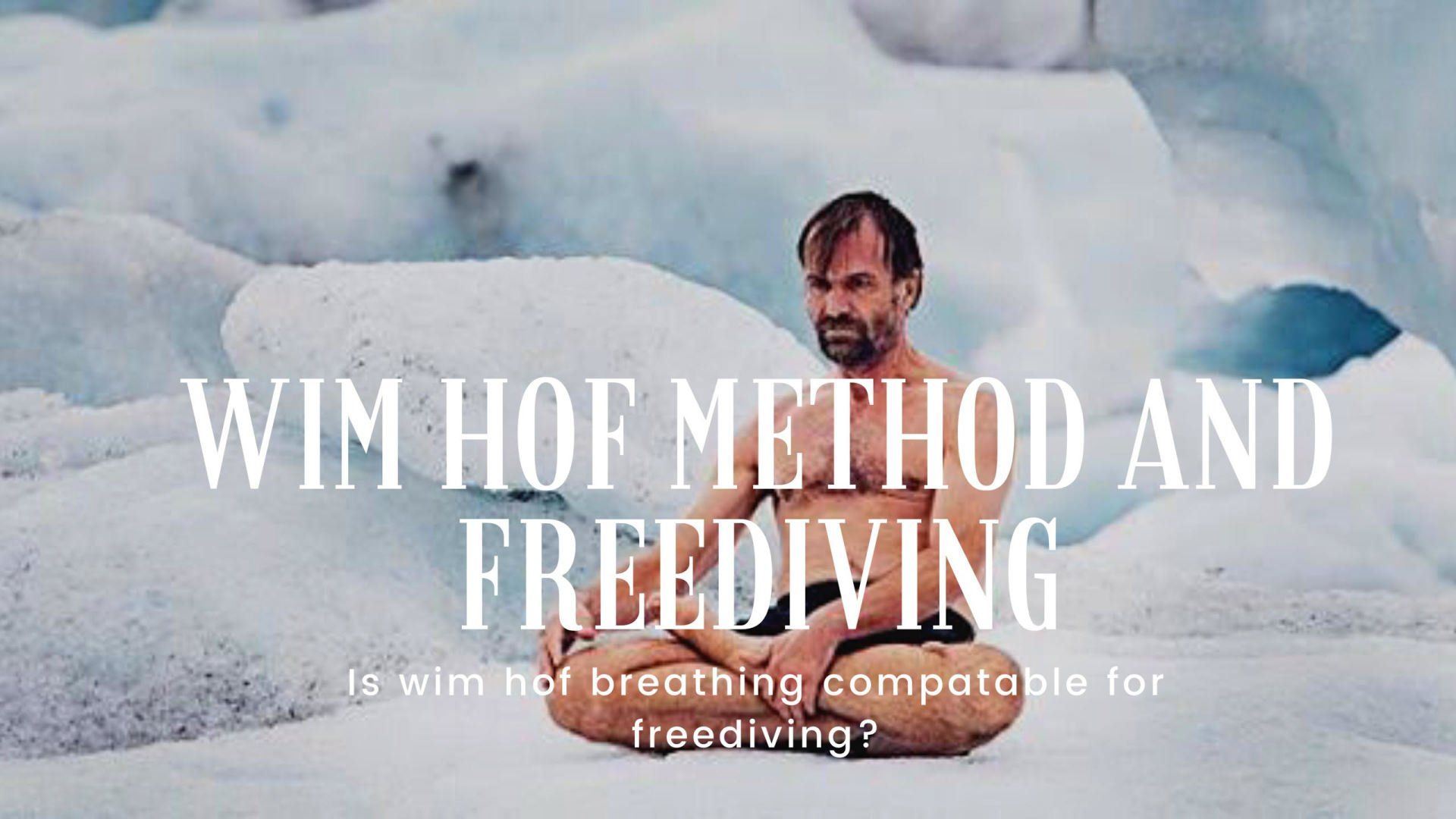How to hold your breath for 5 minutes in less than a month
Alexander Nilsson • October 26, 2019
In this article you will learn step by step how to hold your breath for 5 minutes
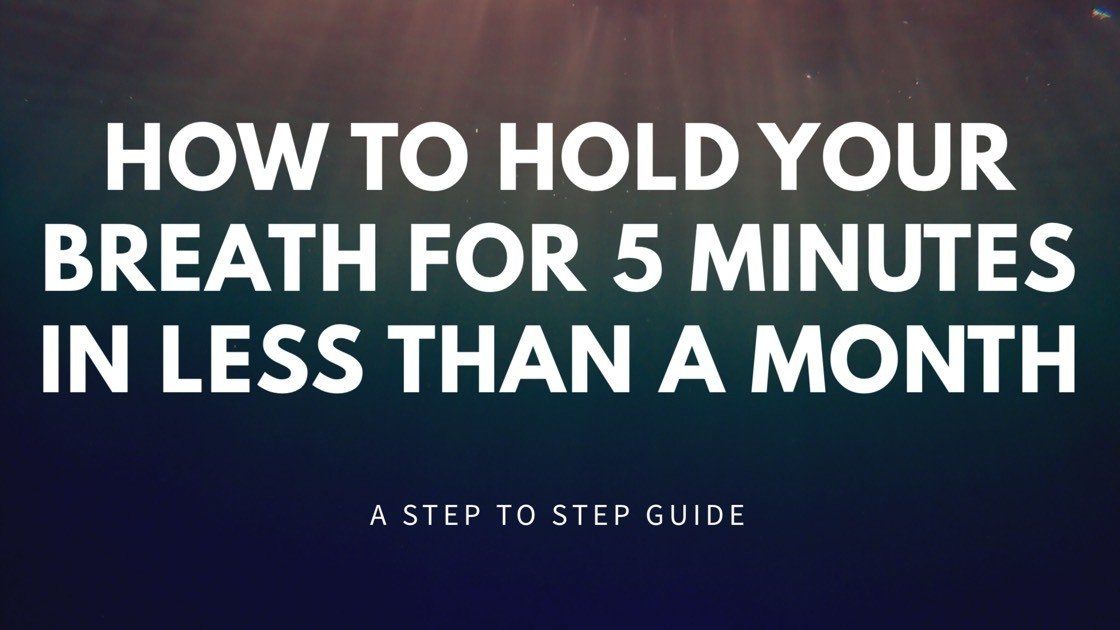
(All breath-holds must be practised dry, and never in the water if you don’t have a qualified safety)
This article will guide you to go beyond what you thought was possible before, and to make you get more comfortable with holding your breath.
It is outlined to help you to reach this specific goal. It might be to finish a certain freediving course, become a better spearfisher, take underwater-pictures or just practice breath-holding for the positive physical effects it has on the body. Here is a link to a study that explains the positive physical effects of breath-holding: https://www.physiology.org/doi/abs/10.1152/jappl.1967.22.2.201
Tips and tricks for a longer breath-hold
- Hold your breath the first thing in the morning, before eating anything. Your metabolic rate will be lower and your body will consume less oxygen.
- Don't drink any caffeine prior to the breath-hold. The caffeine will raise your heart rate which is negative for the breath-hold.
- Lay down completely still and relaxed for at least 2 minutes before the breath-hold. It is during this time your body will have time to relax, and store oxygen in the muscles that you will need for the breath-hold.
Week 1: Objective - Breathe-up, Relaxation and Mental Techniques
You start by laying completely still and relaxed in your bed. Focus on your breathing and relax every single muscle in your body.
Breathe-up
You start by laying completely still and relaxed in your bed. Focus on your breathing and relax every single muscle in your body.
Here I will explain how you easiest figure out how to breathe before your breath-hold. The aim will be that you find your own personal way to breathe before the breath-hold.
You start by laying completely still and relaxed in your bed. Focus on your breathing and relax every single muscle in your body.
It’s important to not over-breathe too much - then you risk to become hypoxic, and black out too soon.
It is also important to not under-breathe too much - then you might have too early onset of contractions and discomfort, then you burn through oxygen too fast and therefore become hypoxic, and black-out too soon.
Try to find the middle spot for yourself, and feel free to experiment with the ventilation during the first week and see how your body respond.
The breath-hold - First Phase
The breath-hold - First Phase
This is the first and most enjoyable phase of a breath-hold.
Breathe-up for 2 minutes and then take 2-4 big breaths before you take a big inhale.- if you feel discomfort and contractions before 1.30 min, then try to ventilate slightly more.
- If you start feeling tingling sensations during your breathe-up, then slow down the breathing. The tingling is usually a sign of too much ventilation.
The first weeks training will be plenty of short breath holds, and on each breath-hold you will stop just when you feel the first contraction!
Repeat this 12 times and breathe-up for 2 minutes in between each breath-hold.
Mental Techniques
The mental aspect of a breath-hold is very central and should be something you practise as much as anything else.
You can choose from these alternatives, and decide which of these mental techniques works best for you!
Body scanning - Here you want to scan through every single muscle in the body, from head to toe ans relax them separately.
So for example, you start by visualizing your neck muscles and make sure that your neck is as relax as it can be. This might take 10-20 seconds. Then you run through other muscle groups and spend at least a few seconds to make sure that each muscle is relaxed. The idea of this is, that while doing the body scan, you will distract yourself from the breath-hold, and the time will pass faster.
Visualize a memory - When you start your breath-hold its important that you have a nice and comfortable feeling. A way to do that is, to play up a pleasant memory in your mind while your holding your breath. Try to remember as much details from this memory as possible. When creating a landscape in your mind, then you will find other things to focus on and the time will pass much faster.
Be present in the moment - Here you will try to achieve a maximal presence in the "now".
So how do you do that? You will start the breath-hold by focusing on a sensation. For example touch, you want to be very aware of the feeling of a certain body part. The easiest will be to pay notice to the feeling of the skin touching what you're laying on.
You can also pay notice to the sounds you hear and try to focus on that. It's all up to you what you want to focus on, as long as it is something that is happening at that exact moment.
This method can make the time pass faster. Though it might be a bit hard in the beginning to find the focus, and you might find your mind drifting off to other random thoughts. The payoff however will be much greater with this method. Not only will you become a better breath-holder, you will also become much more aware and focused in everyday life.
Mental Techniques
The mental aspect of a breath-hold is very central and should be something you practise as much as anything else.
You can choose from these alternatives, and decide which of these mental techniques works best for you!
Body scanning - Here you want to scan through every single muscle in the body, from head to toe ans relax them separately.
So for example, you start by visualizing your neck muscles and make sure that your neck is as relax as it can be. This might take 10-20 seconds. Then you run through other muscle groups and spend at least a few seconds to make sure that each muscle is relaxed. The idea of this is, that while doing the body scan, you will distract yourself from the breath-hold, and the time will pass faster.
Visualize a memory - When you start your breath-hold its important that you have a nice and comfortable feeling. A way to do that is, to play up a pleasant memory in your mind while your holding your breath. Try to remember as much details from this memory as possible. When creating a landscape in your mind, then you will find other things to focus on and the time will pass much faster.
Be present in the moment - Here you will try to achieve a maximal presence in the "now".
So how do you do that? You will start the breath-hold by focusing on a sensation. For example touch, you want to be very aware of the feeling of a certain body part. The easiest will be to pay notice to the feeling of the skin touching what you're laying on.
You can also pay notice to the sounds you hear and try to focus on that. It's all up to you what you want to focus on, as long as it is something that is happening at that exact moment.
This method can make the time pass faster. Though it might be a bit hard in the beginning to find the focus, and you might find your mind drifting off to other random thoughts. The payoff however will be much greater with this method. Not only will you become a better breath-holder, you will also become much more aware and focused in everyday life.
Do this training every second day the first week.
The aim will be to get a two minutes breath-hold without discomfort or contractions in the end of this week.
The aim will be to get a two minutes breath-hold without discomfort or contractions in the end of this week.
Week 2: Objective - Get used to high co2 (urge to breathe) - Second Phase
Now you will hopefully be able to have around two minutes of the comfortable phase in each breath-hold, so now you will have to train the next phase. That will be the contraction phase, or fighting phase.
This week will be many short breath-holds with an even shorter breathing interval in between. This is so you get used to the feeling of having the urge to breathe.
You will do this training every second day during this week. and each training takes around 20 minutes to finish.
You will do this training every second day during this week. and each training takes around 20 minutes to finish.
This is the training table:
Repeat the table four times per training
Repeat the table four times per training
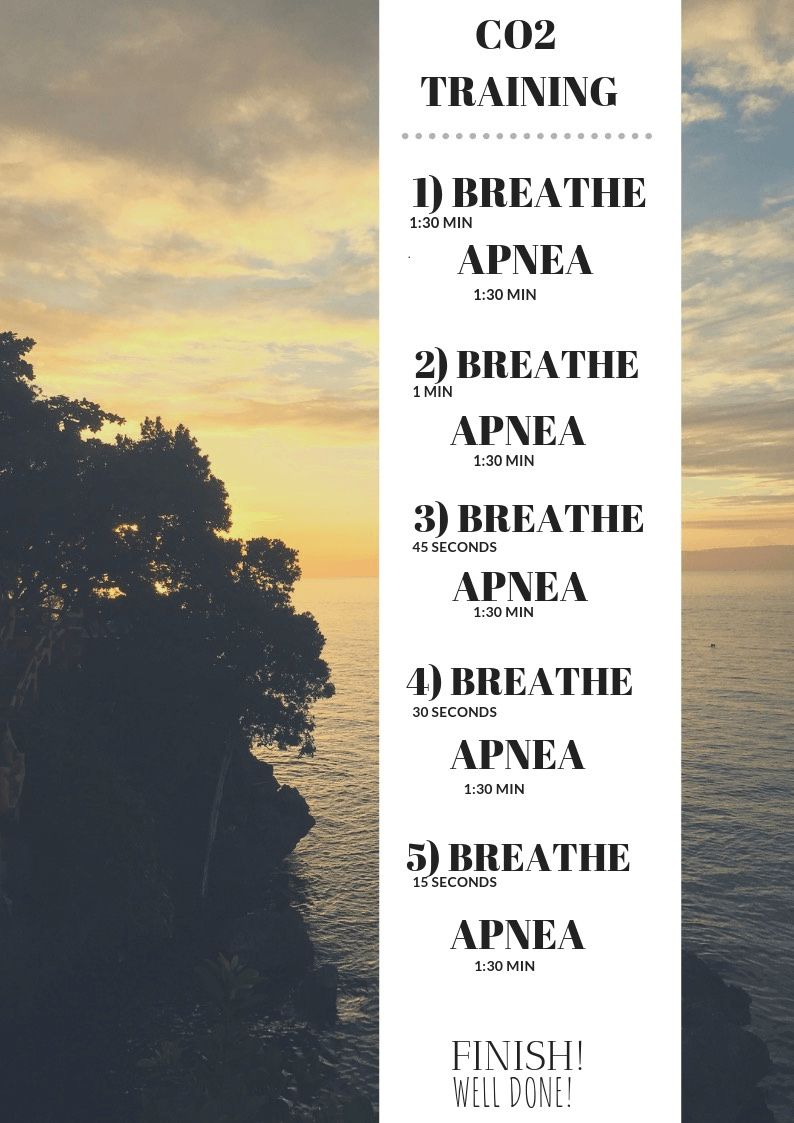
Week 3: Objective - Get used to low oxygen (hypoxic resistance) -Third Phase
In this part of the training you will be working on your hypoxic tolerance. Meaning that you will train yourself to stay awake without blacking out even if you have low oxygen saturation.
This week will consist of longer breath-holds with more ventilation in between each breath-hold.
At this point you will probably be able to have 2 minutes of comfortable phase. Followed by around 2 minutes of contractions and urge to breathe.
So now the breath-hold is hopefully around 4 minutes altogether.
What we want to train now, is the last part of the breath-hold, and this will probably be the most challenging part.
We will be having the strongest urge to breathe at this phase. And this urge to breathe will morph into a sudden euphoric feeling when you start getting hypoxic (low on oxygen). Here it is important that you notice your own symptoms. Everyone has their own hypoxic symptoms. Some have tingling in their fingers, some hear ringing in the ears, or narrowing of the vision field. So notice your symptoms and use them as a sign to start breathe again.
When you start to get over 4 minutes, open your eyes and try to stay clear, and pay notice to any change in the sensations.
Here is the training table for O2 table (hypoxic table)
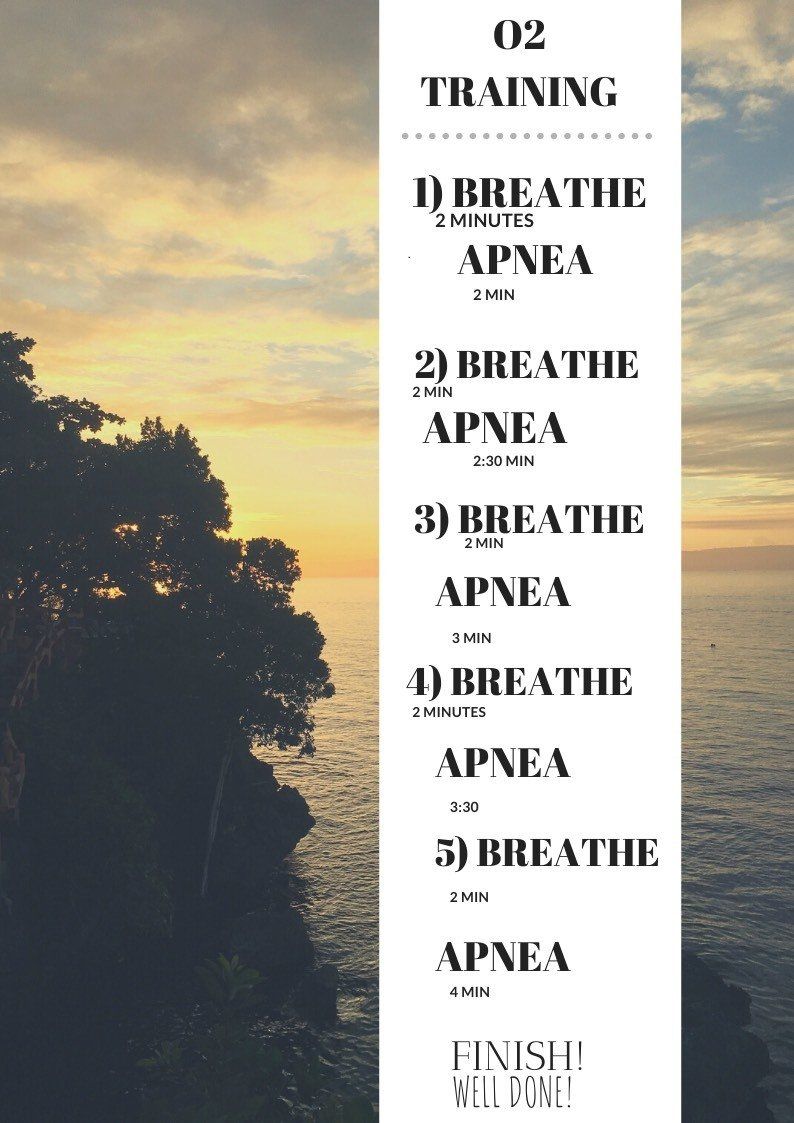
Week 4: Objective - Warmups and Max
In this week you will put everything together and try and make it to five minutes. You might do it on the first tries, or you will do it in the end of this week.
Important is to wait 1 day in between each max breath-hold.
- 1st warm up - You will start by making the first breath-hold until the first contraction.
Followed by two minutes of breathe-up.
- 2nd warm up - hold your breath until 1 minute of contractions.
Followed by two minutes of breathe-up.
- Max - this is when you will bring everything together andgive it your all!
Remember that, even though you don't manage to get up to a 5 minute long breath-hold during the first month, you will soon reach it if you continue with the persistence.
Enjoy!
Share article:


